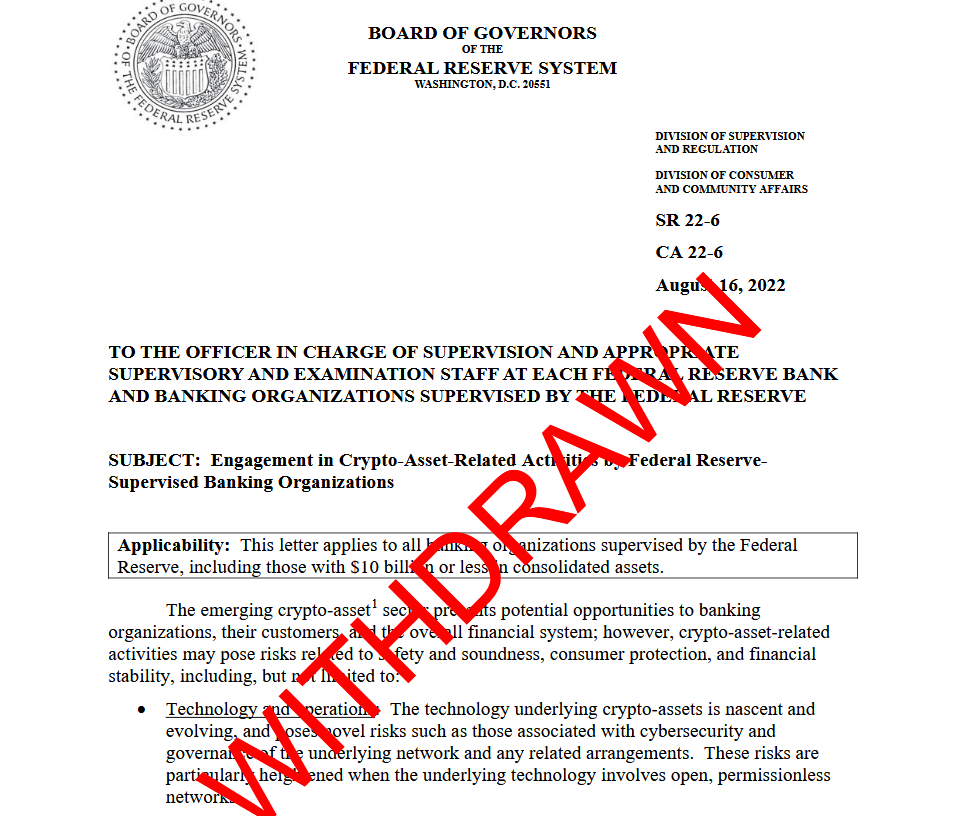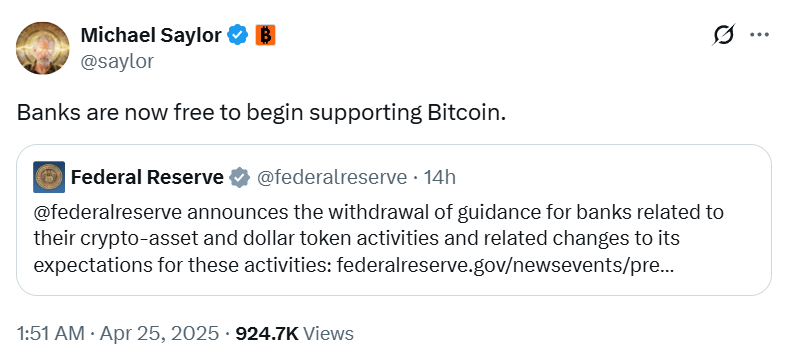
The Fed’s Crypto Shift: A Game Changer?
The US Federal Reserve‘s decision to withdraw its 2022 guidance that cautioned banks against crypto and stablecoin activities has sent ripples through the crypto industry. This move, seen by many as a significant shift in stance, has opened the door for US financial institutions to explore Bitcoin adoption in a more open and less restrictive environment.
The Fed’s 2022 supervisory letter, originally intended to deter banks from engaging in crypto-related activities, was widely criticized for hindering innovation and potentially stifling the growth of the industry. The withdrawal of this guidance, however, has sparked optimism, with industry leaders anticipating a surge in institutional interest.

Banks Ready to Embrace Bitcoin?
Michael Saylor, co-founder of MicroStrategy, a company known for its massive Bitcoin holdings, declared that “banks are now free to begin supporting Bitcoin.” This statement, echoed by many in the crypto community, suggests that the Fed’s decision could pave the way for a new era of institutional adoption in the US.

Anastasija Plotnikova, co-founder and CEO of Fideum, a blockchain regulatory firm, believes this shift could simplify the path towards institutional adoption. “The withdrawal of this particular guidance ensures that crypto assets will be overseen through standard supervisory processes,” she stated, adding that “We still need to have GENIUS and STABLE bills to be passed to further harmonize the crypto activities amongst Fed-supervised firms and other market participants.”
Legislative Landscape: A Key Driver
The GENIUS Act (Guiding and Establishing National Innovation for US Stablecoins) and the STABLE Act (Stablecoin Transparency and Accountability for a Better Ledger Economy), both aimed at providing clear regulatory frameworks for stablecoins, are currently making their way through Congress. Their passage could further bolster the confidence of US financial institutions, paving the way for more widespread adoption.
Eneko Knörr, co-founder and CEO of Stabolut, a yield-bearing stablecoin project, sees this as a “meaningful turning point” for Bitcoin’s institutional adoption in the US. “Up until now, US regulatory hostility made it virtually impossible for traditional financial institutions to participate in this space,” he said. “With the recent shift in the Fed’s guidance, the door is finally open. This unlocks an enormous opportunity for banks – one that until now has been dominated by players like Coinbase and other crypto-native firms,” Knörr added.

A Potential Shift in Power?
The entry of traditional financial institutions into the crypto space could significantly reshape the industry landscape. Experts believe that banks may move quickly to meet the growing demand for crypto services from their clients, potentially challenging the dominance of established players like Coinbase. This could lead to a more competitive market, driving innovation and ultimately benefiting consumers.
While the Fed’s decision marks a positive development, it’s important to remember that regulations remain complex and evolving. The path towards widespread institutional adoption will likely involve navigating ongoing regulatory discussions and ensuring compliance with existing and future regulations. This could be a significant hurdle for some institutions, but it also presents a unique opportunity to shape the future of the crypto industry.


